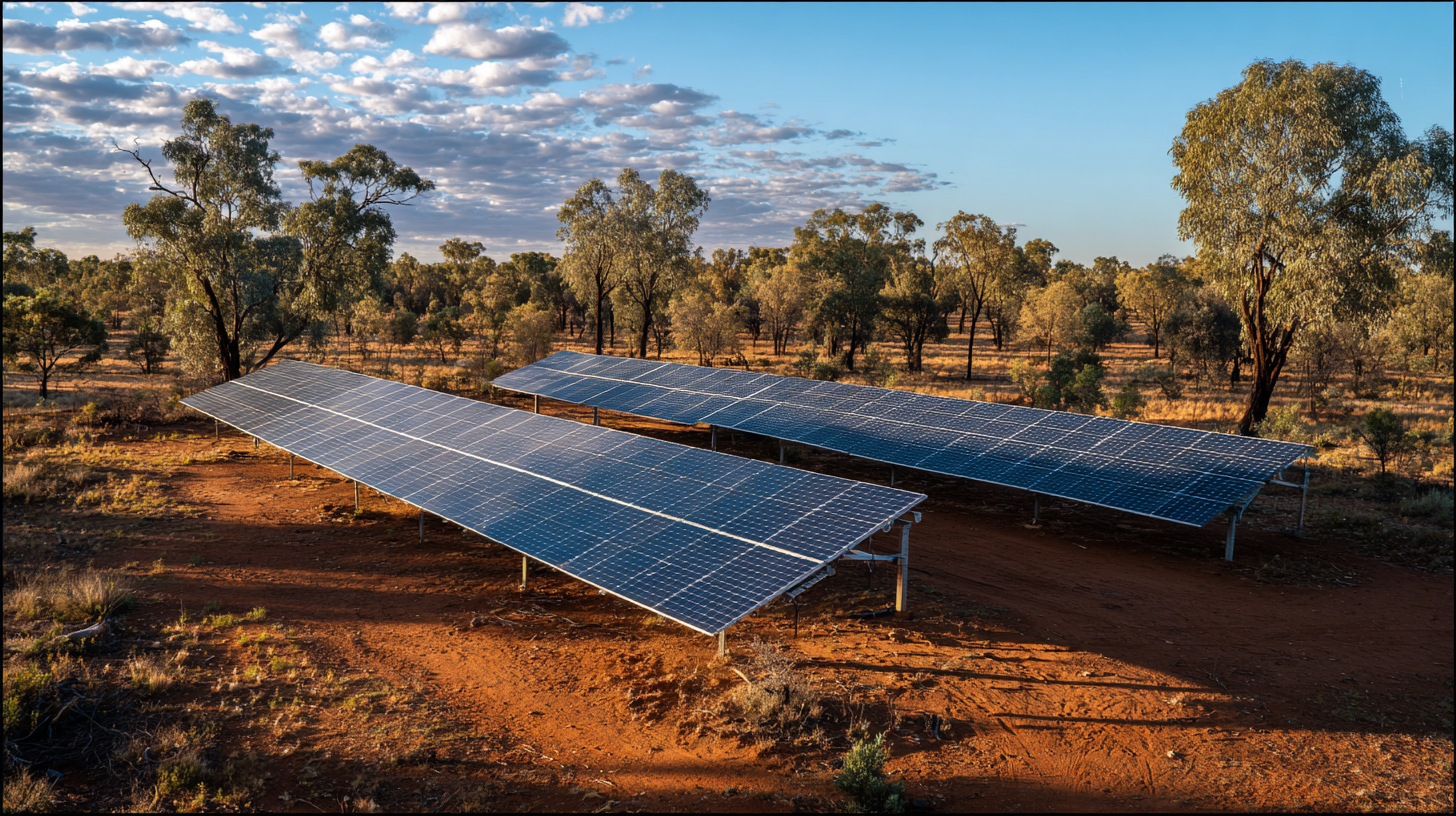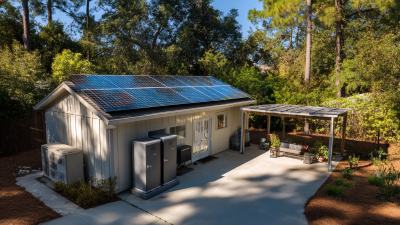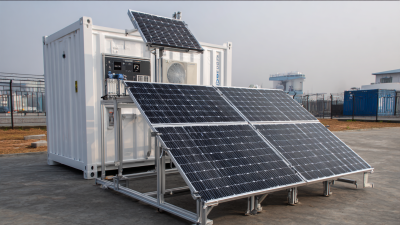MH Energy Your Better Solar and Energy Partner
Leave Your Message
MH Energy Your Better Solar and Energy Partner
In an era where energy efficiency and sustainability are paramount, innovative solutions such as solar panels and battery storage have emerged as game-changers for homeowners and businesses alike. Maximizing energy savings not only contributes to significant reductions in utility bills but also plays a crucial role in reducing our carbon footprint. By harnessing the power of solar panels, you can generate clean energy from the sun, while integrating battery storage solutions allows you to store excess energy for use during peak hours or emergencies. This guide will explore effective strategies to optimize your energy savings through the integration of solar panels and battery storage, helping you make informed decisions that benefit both your wallet and the environment. Embrace the future of energy today and discover how these innovative technologies can transform your energy consumption habits.

Explore further and tap into the potential of renewable energy with detailed information on solar panels and battery storage solutions to maximize your benefits.
Innovative solar panels are revolutionizing energy efficiency by harnessing sunlight more effectively than traditional models. These advanced panels often incorporate higher efficiency ratings, allowing homeowners to generate more electricity even in limited sunlight conditions. By optimizing energy capture, they reduce reliance on grid power and can lead to significant savings over time.
Tip: Consider conducting an energy audit to identify how much energy you can save with upgraded solar technology. A professional assessment can help you choose the right system tailored to your energy needs.
In conjunction with these innovative solar panels, battery storage solutions are becoming essential for maximizing energy efficiency. They allow for the storage of excess energy produced during peak sunlight hours, which can be utilized during the night or cloudy days. This not only enhances energy independence but also helps in lowering electricity bills.
Tip: Look for solar battery systems that offer smart technology, enabling you to monitor usage patterns and optimize your usage to align with peak energy savings.
Battery storage solutions play a crucial role in maximizing the savings derived from solar energy systems. According to the U.S. Department of Energy, energy storage can enhance solar power efficiency by storing excess energy produced during peak sunlight hours for use during periods of low production, such as at night or on cloudy days. By utilizing advanced lithium-ion batteries, households can significantly reduce their dependence on grid energy, which, according to the National Renewable Energy Laboratory, can lead to savings of up to 50% on energy bills over the lifespan of the solar system.
Furthermore, integrating battery storage with solar panels allows for greater energy management and cost savings. A recent report from Bloomberg New Energy Finance highlights that battery storage capacity is expected to increase six-fold globally by 2030, indicating a growing trend in energy self-sufficiency. This surge in battery adoption not only supports financial savings but also contributes to a reduction in carbon emissions, as households can significantly lower their reliance on fossil fuels. Consequently, investing in both solar panels and battery storage solutions creates a resilient energy ecosystem that maximizes energy savings while promoting sustainability.
| Dimension | Value | Unit |
|---|---|---|
| Average Solar Panel Efficiency | 20.4 | % |
| Average Battery Storage Capacity | 13.5 | kWh |
| Average Cost of Solar Panel Installation | $15,000 | USD |
| Annual Energy Savings from Solar | $1,200 | USD |
| Average Payback Period | 6 | years |
| Carbon Emissions Reduction | 14,000 | lbs/year |
| Inverter Efficiency | 95 | % |
The shift from traditional energy sources to solar energy systems is gaining momentum, particularly in the context of increasing energy demands and rising environmental concerns. In Taiwan, the market for innovative energy solutions is experiencing significant growth, with projections indicating the V2H (Vehicle-to-Home) power system market will reach USD 93.58 million in 2024, expanding to USD 532.59 million by 2032. This shift represents a compound annual growth rate of 24.28%, showcasing a robust interest in integrating renewable energy technologies into everyday life.
Investing in renewable energy concepts has become increasingly attractive, particularly in Taiwan, where the market for green energy stocks is burgeoning. The rise of new energy companies aligns with Taiwan's commitment to sustainable development and carbon neutrality, positioning these stocks as potentially lucrative investments. As the demand for innovative solar panels and battery storage solutions grows, stakeholders are encouraged to explore the myriad opportunities within this innovative sector, carefully weighing the benefits and challenges involved. The transition to solar energy systems not only promises substantial energy savings but also contributes positively to the global effort to combat climate change.
This chart compares the average monthly costs of solar energy systems against traditional energy sources. By investing in innovative solar panels and battery storage solutions, consumers can significantly reduce their energy expenses.
Selecting the right solar panel and battery storage solution is crucial for maximizing energy savings and ensuring efficiency in your energy management. With the global outdoor energy storage market projected to grow significantly, innovative designs in solar panels and battery systems are more accessible than ever. When considering a solar panel system, evaluate your energy needs, the space available for installation, and the type of solar technology that suits your lifestyle. For instance, if you live in an area with limited roof space, balcony-mounted solar systems could be a great option.

Tips: Look for solar panels with high efficiency ratings, as these will generate more electricity in less space. Additionally, compare battery storage options for their capacity and discharge rates to ensure they meet your energy demands during peak hours or outages. Opting for integrated solar and battery systems can provide seamless energy management and further enhance savings.
As the solar market evolves, make sure to stay updated on the latest trends and technologies. Evaluating multiple vendors and their offerings can help you find a solution that balances cost, performance, and sustainability. Whether you're interested in residential or agricultural applications, choosing the right combination of solar panels and battery systems will significantly impact your energy savings and environmental footprint.
The future of energy savings is increasingly shaped by advancements in solar technology and battery storage solutions. The solar panel market is expected to experience significant growth, with projections indicating that the market size will reach $4.12 billion by 2031, up from $1.85 billion in 2024, reflecting a compound annual growth rate (CAGR) of 12.2%. This surge is driven by the integration of innovative technologies, including artificial intelligence, which enhances predictive capabilities and operational efficiency, thus benefiting all stakeholders involved.
In parallel, the energy storage systems (ESS) market is also set for remarkable expansion. By 2035, the global ESS market is forecasted to attain a value of $250.8 billion, underscoring a CAGR of 11.5% from an estimated $75.8 billion in 2025. Additionally, the advanced storage solutions sector is anticipated to grow to $42.37 billion by 2034, indicating a steady annual growth rate of 8.18%. These trends highlight the growing emphasis on energy management systems, such as vehicle-to-home (V2H) solutions, projected to increase by a staggering 24.28% over the next several years. Together, these innovations are paving the way for a more sustainable and efficient energy landscape.







